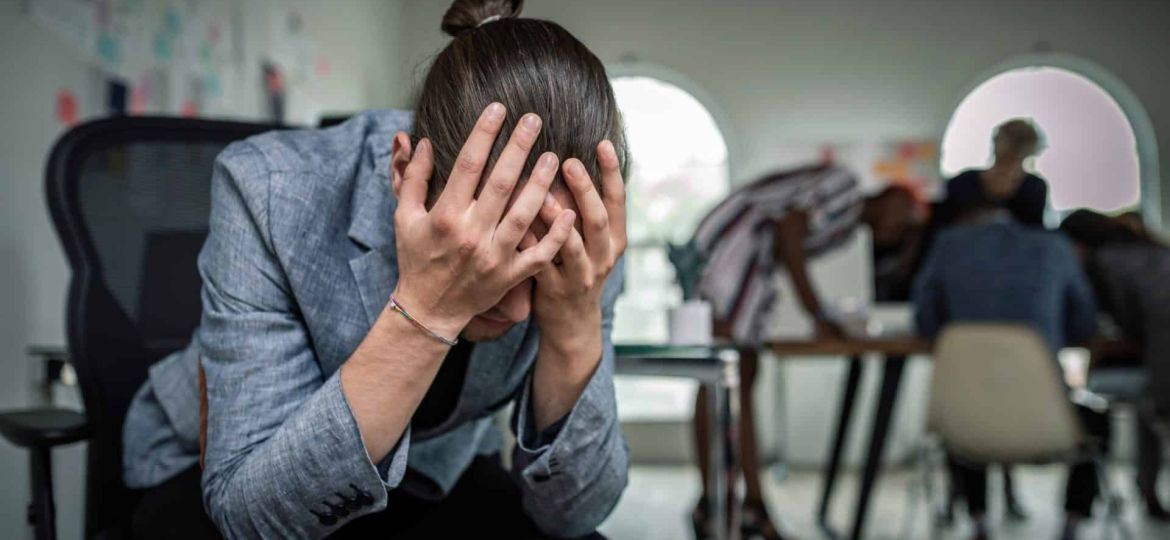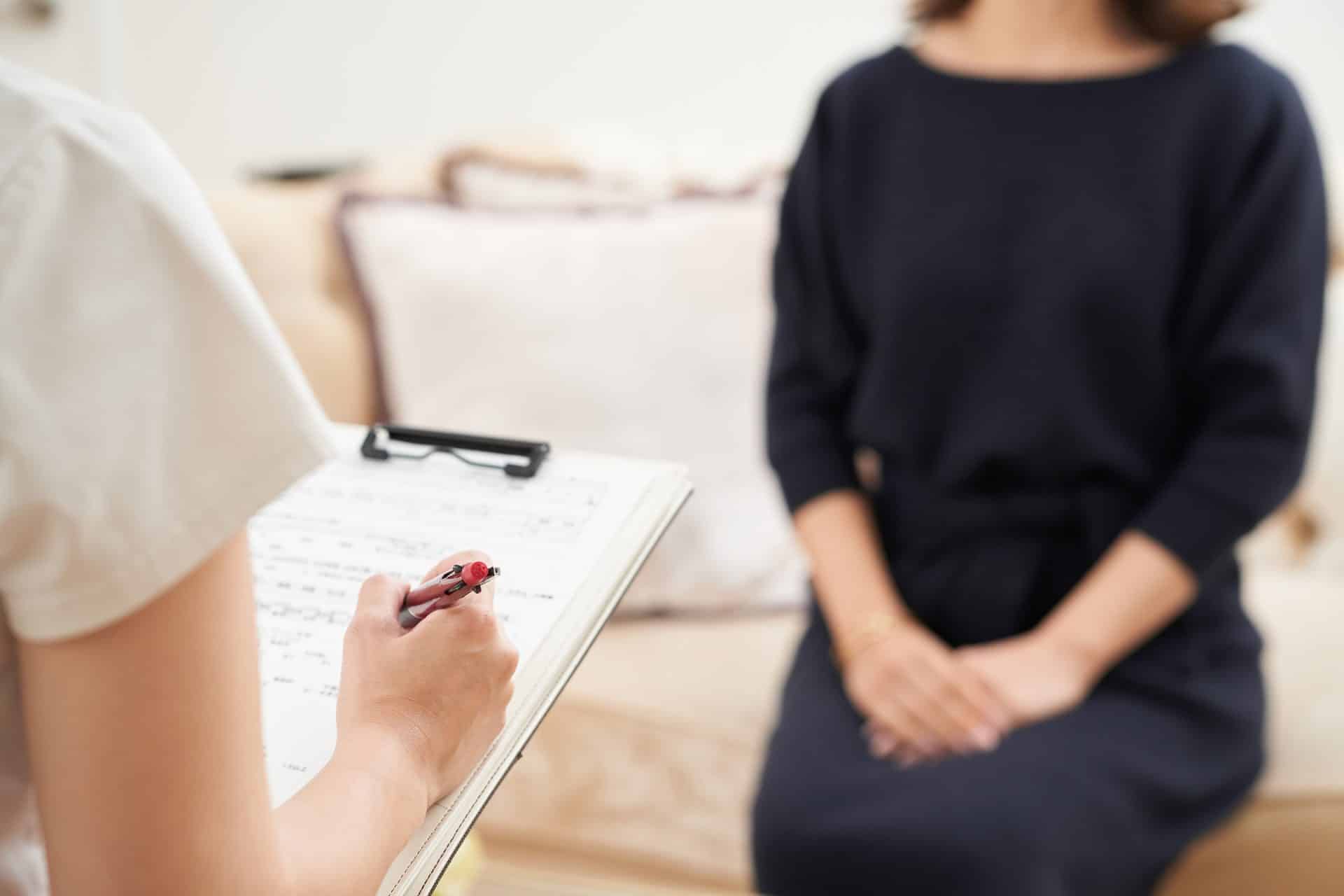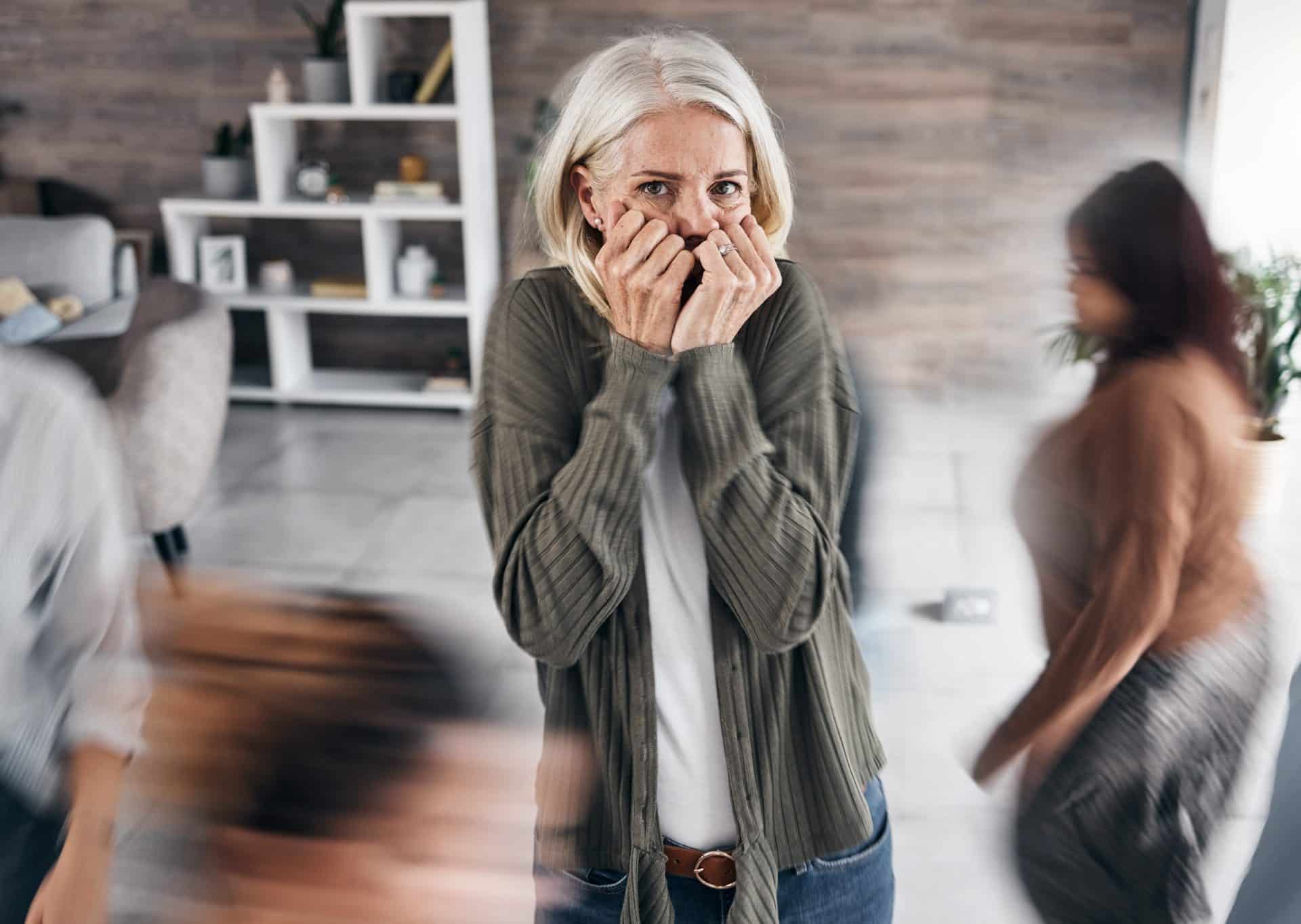
INTRODUCTION
The mundane interactions of daily life can quickly become highly stressful for some people. Attending a group meeting, going to the hairdresser, or ordering a coffee, for example, are actions that turn into an arduous challenge for those with social anxiety. While shyness is a personality trait and a natural tendency to be reserved, social anxiety is a full-fledged disorder. It is characterized by an intense and persistent fear of being judged by others. Various social anxiety tests are available, and their use helps assess the level of social anxiety and identify specific situations that trigger this disorder. Discover what you need to know about social anxiety tests.
DIFFERENT TYPES OF SOCIAL ANXIETY TESTS
Recent statistics reveal that anxiety affects more than 8% of the population over the age of 12 in Quebec. Social anxiety, also known as social phobia, is one such manifestation.
An intense and disproportionate fear of social situations marks this anxiety disorder. This fear is much stronger and more invasive than shyness or occasional stage fright.
People who suffer from it fear being judged, rejected, or humiliated by others. To be considered social anxiety, this condition must last for at least six months.
-
WHAT TO KNOW ABOUT SOCIAL ANXIETY?
Social anxiety can be provoked by various situations, such as speaking in public, meeting new people, or being observed while doing something. It is often accompanied by physical symptoms like blushing, trembling, excessive sweating, a rapid heartbeat, nausea, a weak voice, rigid posture, and difficulty maintaining eye contact.
The fear felt is far greater than the actual danger, and even though the person is aware of this, they find it difficult to control. To avoid significant distress and discomfort, people with social anxiety often avoid social situations that make them anxious. This avoidance can significantly disrupt social, professional, school, and family life.
Are you looking to assess, understand, and manage this disorder? Several social anxiety tests exist:
-
SELF-ASSESSMENT QUESTIONNAIRES
There are several methods to assess the prevalence of social anxiety disorder in a person, including various questionnaires. Some of these tools are exclusively for health professionals, such as psychiatrists, psychologists, and other neurologists. However, a patient can also use specific questionnaires as part of a social anxiety self-assessment test. The main tools used include:
-
- The Liebowitz Social Anxiety Scale (LSAS): This test consists of 24 statements that assess the intensity of fear or anxiety and the frequency of avoidance in various everyday social situations. Each question is scored, and the total score indicates the severity of social anxiety, which can be mild, moderate, or severe.
- “Evaluate Your Fear of Others”: A tool from André and Légeron’s book La peur des autres. This questionnaire presents 14 social situations likely to provoke anxiety. The person evaluates their level of discomfort and tendency to avoid the situation. The sum of the scores gives a general indication of the level of fear of others, and analyzing the responses to each situation helps better understand the most problematic social situations.
- The DSM-5 questionnaire, a reference manual for diagnosing mental disorders, offers a specific questionnaire to assess the severity of social anxiety disorder. It evaluates thoughts, feelings, and behaviours related to social situations.
- The Fear Questionnaire: Although not explicitly designed for social anxiety, it helps assess fear and avoidance in various situations, including social ones. It can help identify whether other anxiety disorders are present alongside social anxiety.
Self-assessment tests can help one better understand one’s symptoms. People reflect on their reactions and behaviours in different social situations by answering the questions. This context helps them become aware of the extent of the problem and its impact on daily life. Taking a test also helps identify the specific conditions that trigger the most anxiety.
Completing the questionnaires at different times allows one to observe whether symptoms improve, for example, after treatment. The results of self-assessment questionnaires can also serve as a starting point for a discussion with a therapist and help a person articulate their feelings.
A social anxiety test is thus a valuable tool for better understanding one’s difficulties and considering a therapeutic approach. However, it is recommended to complement self-assessment with a consultation with a healthcare professional to obtain a precise diagnosis and personalized support. These tests do not replace a medical diagnosis only a mental health professional can make. Therefore, self-assessment results should be interpreted with caution.
-
PHYSIOLOGICAL TESTS
Although social anxiety is primarily diagnosed using behavioural criteria, some physiological tests can also provide additional information. These evaluations help medical professionals refine the diagnosis by objectively measuring specific physical symptoms associated with anxiety, such as increased heart rate, sweating, or muscle tension. Their results can support the information provided by the patient and help differentiate social anxiety from other anxiety disorders.
The most commonly used tests in this context include heart rate and blood pressure measurements. This evaluation allows for assessing the physiological response to social stimuli. An electroencephalogram (EEG), which measures the brain’s electrical activity, can also be performed. This test can identify abnormalities in brain waves associated with anxiety.
THE LIEBOWITZ SOCIAL ANXIETY SCALE: A COMMONLY USED TEST
The Liebowitz Social Anxiety Scale (LSAS) is a valuable tool for identifying individuals suffering from social anxiety, assessing the severity of their disorder, and tracking their progress over time. Healthcare professionals typically use this test to guide treatment, and is also accessible to patients to help them better understand their level of social anxiety.
The questionnaire consists of 24 items, each describing a specific social situation. It assesses anxiety and avoidance in various social situations, such as making phone calls in public, participating in small group activities, eating in public, speaking to people in authority, working while being observed, meeting strangers, being the center of attention, giving a speech, or expressing disagreement.
For each situation, the individual must answer two types of questions:
- How intense is your fear in this situation? The possible responses range from 0 to 3, representing no to severe fear.
- How often do you avoid this situation? The responses range from 0 to 3, from never to frequently.
At the end of the test, the results for fear and avoidance are combined to get a total score. This score helps determine the level of social anxiety. A low score may indicate mild social anxiety or discomfort in certain situations. A moderate score suggests significant social anxiety that may affect some aspects of daily life. A high score suggests severe social anxiety, which may require specific therapy.
WHEN SHOULD YOU TAKE A SOCIAL ANXIETY TEST?
Several situations may prompt someone to take a social anxiety test. Suppose you constantly feel uncomfortable in social settings or often experience discomfort, embarrassment, or stress in social situations like talking to strangers or being observed. In that case, this test can help you determine whether these feelings are typical or indicative of social anxiety.
When social anxiety interferes with your daily life, and you regularly avoid certain situations because you fear being judged, criticized, or embarrassed, this evaluation can show how much your avoidance is linked to this disorder.
Self-assessment tests, like the Liebowitz scale, are practical tools that provide an initial idea of the intensity of your social anxiety. However, they cannot replace the opinion of a healthcare professional. Social anxiety can manifest in various ways and with different levels of intensity in each patient. A professional is trained to identify these nuances and accurately diagnose this disorder. It’s also possible that other conditions, such as depression or insomnia, for example, may accompany social anxiety. A doctor’s perspective helps identify these comorbidities and adjust therapy accordingly.
CONCLUSION
You are not alone. Social anxiety is a common anxiety disorder. Various methods and non-medication-based solutions are available to improve the situation of individuals affected by this disorder, including Neurofeedback. Evaluation tests and qualified professionals can help you understand and overcome social anxiety.




